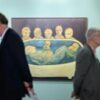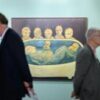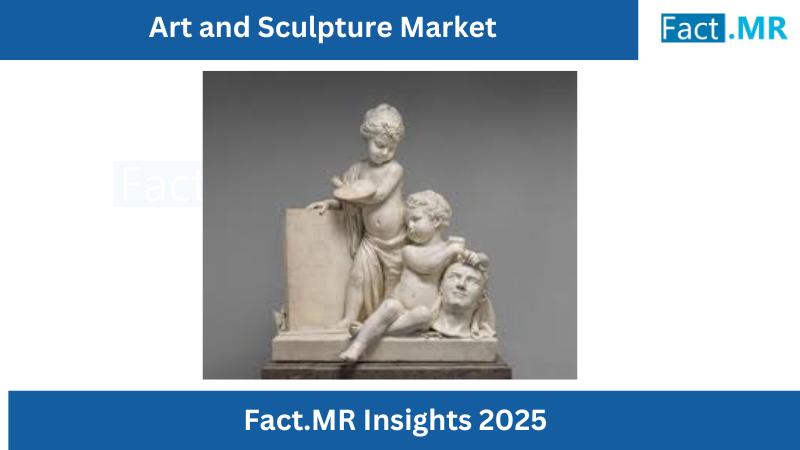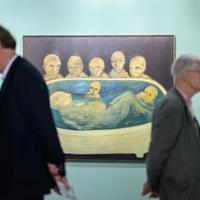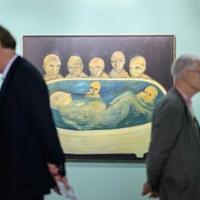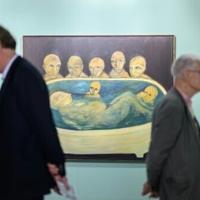The global market for art and sculpture is expected to grow at a compound annual growth rate (CAGR) of 10.4% from 2024 to 2034, from a size of US$ 43 billion in 2024 to US$ 115.64 billion by the end of 2034.
For More Insights into the Market, Request a Sample of this Report: https://www.factmr.com/connectus/sample?flag=S&rep_id=9878
Driving Factors: Key Market Catalysts
Several macroeconomic and cultural factors are shaping the growth trajectory of the global art and sculpture market. Increasing globalization and the democratization of art through online platforms have opened new avenues for artists and buyers to connect, regardless of geography. Collectors are no longer limited to physical auction houses or galleries-online auctions, digital showcases, and NFT-backed artworks have revolutionized accessibility.
Wealth accumulation among high-net-worth individuals (HNWIs) in emerging economies such as China, India, and the UAE is another key growth catalyst. Art is being viewed not only as a means of cultural expression but also as a strategic investment, with sculptures and fine art pieces delivering long-term asset value and portfolio diversification. Additionally, art fairs, biennales, and global exhibitions are boosting international exposure, fostering cross-border appreciation and trade of artworks.
Institutional acquisitions by museums, foundations, and private firms continue to increase, particularly in regions with developing art infrastructures. Governments and urban developers are also investing in public art installations and cultural restoration initiatives, fueling demand for sculptures and outdoor art pieces that enhance civic identity and tourism.
Market Segments & Regional Trends
The art and sculpture market is segmented by product type, sales channel, and buyer demographics. Among these, modern and contemporary art dominates the landscape, reflecting current societal themes, abstract interpretations, and experimental mediums that resonate with younger collectors. The sculpture segment, especially large-format installations and bronze castings, is seeing increased patronage from public institutions and hospitality projects that seek to integrate art into architectural and public spaces.
In terms of distribution channels, auction houses remain the most influential, with well-established names such as Christie’s, Sotheby’s, and Phillips accounting for a significant portion of the market share. However, online sales channels are gaining traction rapidly, accelerated by pandemic-era shifts in consumer behavior and improvements in digital authentication, virtual exhibitions, and blockchain technology.
From a regional perspective, North America leads the global art and sculpture market, particularly driven by a robust network of galleries, museums, and art collectors in the United States. Europe, with cultural powerhouses like France, Italy, Germany, and the UK, continues to serve as a critical hub for both classic and contemporary artworks. Asia Pacific is emerging as the fastest-growing region, with China, Japan, South Korea, and India contributing to a surge in art investments, gallery openings, and participation in international art fairs.
Latin America and the Middle East are also showing increased activity, fueled by urban redevelopment initiatives, luxury real estate integration, and rising interest in indigenous and traditional art forms. Art tourism and cross-cultural collaborations in these regions are enhancing local markets and attracting global attention.
Challenges: Barriers & Market Limitations
Despite strong growth signals, the art and sculpture market is not without its challenges. One of the key limitations is the lack of standardization in valuation, which makes pricing subjective and sometimes opaque. This can deter new buyers or investors unfamiliar with the intricacies of art appraisal.
Authentication and provenance verification remain persistent concerns, especially with high-value pieces. Forgery and art theft pose risks to collectors and institutions alike, making investment in secure authentication technology and provenance tracking essential. Though blockchain offers a potential solution, its implementation remains in early stages for physical artworks.
Moreover, economic volatility and geopolitical instability can impact collector sentiment and discretionary spending. Art, being a non-essential luxury investment, often sees fluctuations in demand in response to global economic uncertainty or reduced liquidity among collectors.
Sustainability is also emerging as a key concern. The environmental impact of materials used in sculptures-such as bronze, marble, and resin-along with the carbon footprint associated with international shipping and exhibition logistics, has raised questions about eco-conscious practices in the art world.
Browse Full Report: https://www.factmr.com/report/art-and-sculpture-market
Innovations & Opportunities
Innovation is playing a transformative role in expanding the scope and accessibility of the art and sculpture market. Digital platforms are not only hosting online auctions but also curating virtual reality (VR) and augmented reality (AR) exhibitions that replicate gallery experiences, making it easier for global buyers to engage with artworks from anywhere in the world.
Blockchain and NFTs (non-fungible tokens) are making waves in the modern art scene, allowing artists to monetize digital creations and enabling buyers to secure unique, verifiable ownership of artworks. While the NFT market is still evolving, its intersection with traditional sculpture and hybrid art installations presents new monetization avenues and artistic expression.
3D printing is revolutionizing sculpture creation, allowing for intricate designs and faster prototyping using sustainable or recycled materials. Custom commissions are increasingly facilitated through digital mockups, enabling personalized pieces for both private and public installations.
Another emerging trend is art leasing, particularly in the corporate and hospitality sectors. Businesses are embracing curated art and sculptures to enhance brand identity and ambiance without long-term commitment. This model not only creates recurring revenue for artists and galleries but also broadens art’s presence in everyday environments.
In terms of inclusivity, global initiatives are promoting underrepresented artists, women sculptors, and indigenous creators, thereby enriching market diversity and expanding the definition of what constitutes collectible or investable art.
Future Outlook: Growth Trajectory & Forecast
The global art and sculpture market is poised for sustained growth over the next decade, supported by the rising confluence of culture, commerce, and technology. As digital innovation continues to bridge the gap between creators and collectors, the market is expected to attract new participants-from millennial and Gen Z investors to technology-forward institutions.
The projected CAGR of 6.3% through 2034 reflects not only increased transaction volumes but also rising average value per artwork. This trend is expected to continue as appreciation for both tangible and digital art assets strengthens. Additionally, the role of art as a hedge against inflation and as a symbol of cultural capital is likely to attract more institutional investors.
Market leaders that prioritize transparency, authentication, and sustainable practices will gain a competitive edge. Investment in digital curation, AI-powered art advisory services, and immersive art experiences will further enhance customer engagement and drive growth.
In conclusion, the art and sculpture market is transitioning from a niche cultural economy into a global, interconnected industry that thrives at the intersection of heritage and innovation. As cultural appreciation, digital sophistication, and global wealth converge, the next decade will shape a more inclusive, tech-savvy, and resilient art ecosystem.
Check out More Related Studies Published by Fact.MR:
Art Supplies Market: https://www.factmr.com/report/1226/art-supplies-market
Shelf Liner Market: https://www.factmr.com/report/2725/shelf-liners-market
Camping Bed and Mat Market: https://www.factmr.com/report/4876/camping-beds-and-mats-market
Hair Wig Market: https://www.factmr.com/report/4378/hair-wig-market
Contact:
US Sales Office
11140 Rockville Pike
Suite 400
Rockville, MD 20852
United States
Tel: +1 (628) 251-1583, +353-1-4434-232
Email: sales@factmr.com
About Fact.MR
We are a trusted research partner of 80% of fortune 1000 companies across the globe. We are consistently growing in the field of market research with more than 1000 reports published every year. The dedicated team of 400-plus analysts and consultants is committed to achieving the utmost level of our client’s satisfaction.
This release was published on openPR.
This post was originally published on this site be sure to check out more of their content

